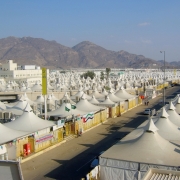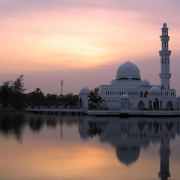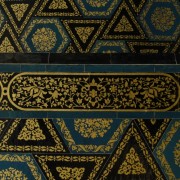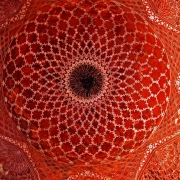“What does the heart want?” Being seen, “heart ethnography,” and knowledge through surrender in a Bashkir Sufi circle in Russia
Drawing on fieldwork in a Bashkir Sufi circle in Russia, this article explores my interlocutors’ mode of experiencing the world and transcendence. By letting myself be seen in the field, I let them shape the terms of our encounter as a way of glimpsing their mode of knowing. I explore my fieldwork experience as a transformation of the self in parallel with my interlocutors’ narrations of encounters with saints. I reflect on field experiences in which the limits of my rational thinking are revealed and mirrored in my interlocutors’ spiritual experiences. Being seen by their sheikh, my interlocutors experience a mode of vision that reveals the heart as an organ of perception. Similarly, as I experience being seen in the field, I am pointed to my own heart and soul. This mode of knowing that I glimpse into sheds new light on encounters with “otherness” and transcendence in anthropology.
A pilgrimage
On a hot day in July, Ildar picks me up in his car, and we drive to a gas station on the outskirts of Ufa, where other Bashkir murids (disciples) join us. 1 As we finish our cof- fee, we see the murshid (spiritual guide), a man in his sixties with a luminous face and trimmed white beard, emerging from a car. As we later arrive at our destina- tion in the Bashkir countryside, on land that once be- longed to the murshid’s Bashkir clan, we see from afar the grave of an ishan (healer) surrounded by trees and a small fence. This gravesite is typical of the sacred places I have visited during my fieldwork among the Bashkir murids of a transnational Naqshbandi tariqa (order) and an example of their work reviving the Bashkir sa- cred landscape. After the ablution in the newly constructed mosque, our small group heads to the grave. At the end of the dhikr (remembrance of God), the murshid says, “We do not see God, but God sees you. Meditate. God is al- ways with you; it is you who are not with Him.” At this moment, I enter a meditation with my eyes closed, the palms of my hands open, and my face directed toward the hot sun. After a long silence, we hear the voices of a family of pilgrims approaching. As we leave the grave, Aisylu, a woman murid with a soft presence, gently asks what I have felt. I respond salam (peace). When I further allude to my difficulty opening up in such moments, she tells me that near holy graves we need to fully let go and surrender in order to let nur (the light) enter us. “Trust in God. Graves of awliya (saints) are pure places; they purify the pilgrim.”









